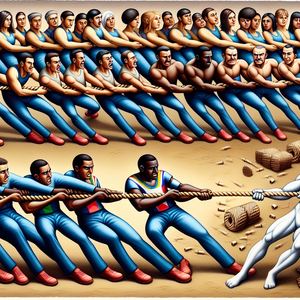The Evolution of Denver’s Skyline: A Tale of Construction

The story of Denver’s skyline begins in the late 19th century when the city was established during the Gold Rush. Early construction companies like the M.A. McGowan Company played a pivotal role in creating the first commercial buildings. The famous Brown Palace Hotel, completed in 1892, remains a symbol of Denver’s architectural heritage. Its intricate design, featuring a unique blend of Victorian and Romanesque styles, set a precedent for future constructions that prioritized both aesthetics and function. Additionally, the construction of the Denver Union Station in 1914 marked a significant milestone, embodying the city’s aspirations and growth during the early 20th century. The station, with its Beaux-Arts architectural style, served as a gateway for travelers and still functions as a bustling hub today, showcasing the city’s commitment to preserving its historical landmarks.
The Mid-20th Century: A Shift Towards Modernism
As the city entered the mid-20th century, a shift towards modernism began to redefine Denver’s skyline. The construction boom of the 1960s saw the rise of prominent firms such as Hensel Phelps, which contributed significantly to the city’s architectural landscape. One of their standout projects, the Denver Convention Center, completed in 1990, showcased the use of innovative materials and design elements that were revolutionary at the time. The building’s iconic blue bear sculpture peering into the structure became a symbol of the city’s embrace of contemporary architecture. During this era, other notable landmarks emerged, such as the Wells Fargo Center (completed in 1990), which at the time was one of the tallest buildings in the western United States. Its postmodern design, characterized by a distinctive triangular shape and reflective glass facade, signified a departure from traditional architectural styles and embraced the spirit of modernity.
The Turn of the Century: A Surge in Skyscrapers
The early 2000s marked a new era for Denver, characterized by a surge in skyscraper construction. Companies like Mortenson Construction led the charge with projects such as the 1144 Fifteenth Building, completed in 2017. This 40-story skyscraper became a hallmark of Denver’s commitment to modern urban development. The use of sustainable materials and energy-efficient design set a benchmark for future developments in the city, reflecting a growing awareness of environmental issues within the construction industry. In addition, the completion of the Salesforce Tower in 2020 added another landmark, further enhancing the skyline with its sleek design. The tower not only contributed to the aesthetic appeal of Denver’s skyline but also embodied the city’s shift towards a tech-driven economy, attracting businesses and professionals alike.
The Role of Local Firms: Innovation and Community Impact
In addition to well-known names, many smaller, local construction firms have made significant contributions to Denver’s skyline. Companies like Studio B Architects have focused on blending modern design with the city’s historical context, creating buildings that respect the past while looking toward the future. Their work, such as the renovation of historic structures in LoDo (Lower Downtown), demonstrates how local firms prioritize community impact alongside aesthetic value. Moreover, the revitalization of neighborhoods like RiNo (River North Art District) showcases the collaborative efforts between local firms, artists, and the community. The integration of art and architecture has not only transformed the skyline but also fostered a sense of identity and pride among residents.
Recent Trends: Eco-Friendly and Smart Buildings
In recent years, the construction landscape in Denver has embraced sustainability and technology. Companies like GH Phipps Construction Companies are at the forefront of this movement, integrating green building practices into their projects. The redevelopment of the former National Western Stock Show complex into a state-of-the-art event center exemplifies the city’s commitment to eco-friendly construction. The use of renewable materials and energy-efficient systems not only enhances the building’s functionality but also aligns with Denver’s vision of a sustainable urban environment. Additionally, the rise of smart buildings, equipped with advanced technology for energy management and enhanced occupant comfort, reflects a broader trend in urban development. This shift not only addresses environmental concerns but also improves the overall quality of life for Denver’s residents.
The evolution of Denver’s skyline is a captivating tale of innovation, perseverance, and community engagement. From its humble beginnings to the modern skyscrapers that define its landscape today, the city’s construction companies have played a crucial role in shaping its architectural identity. As Denver continues to grow and adapt to the challenges of urbanization, it is clear that the narrative of its skyline is far from over. Future developments will undoubtedly reflect a blend of sustainability, technology, and a deep respect for the city’s rich history, ensuring that Denver’s skyline remains a testament to its vibrant spirit and dynamic character. Through the collaborative efforts of both large firms and local builders, Denver is well on its way to crafting a skyline that not only dazzles the eye but also enriches the lives of its inhabitants.
Urban Planner
City and county planning departments, architectural firms, and non-profit organizations focused on urban development
Core Responsibilities
Develop land-use plans and programs that help create communities, accommodate population growth, and revitalize physical facilities.
Conduct research and analyze data on social, economic, and environmental factors influencing land use.
Collaborate with government officials, developers, and community members to create sustainable urban designs.
Required Skills
Proficient in GIS software and other planning tools.
Strong communication and negotiation skills.
Knowledge of zoning laws and environmental regulations.
Construction Project Manager
Large construction firms like Hensel Phelps and Mortenson Construction
Core Responsibilities
Oversee construction projects from inception to completion, ensuring they are completed on time and within budget.
Coordinate with architects, engineers, contractors, and stakeholders to manage schedules and resources.
Implement safety protocols and ensure compliance with building codes and regulations.
Required Skills
Strong leadership and problem-solving abilities.
Proficiency in project management software (e.g., MS Project, Primavera).
Experience with budgeting and cost estimation.
Sustainability Consultant
Environmental consulting firms, architectural firms, and large construction companies focused on sustainability
Core Responsibilities
Advise construction companies on eco-friendly building materials and sustainable practices.
Conduct energy audits and assess the environmental impact of construction projects.
Help clients achieve certifications such as LEED (Leadership in Energy and Environmental Design).
Required Skills
In-depth knowledge of sustainable building practices and environmental regulations.
Strong analytical skills and experience with sustainability assessment tools.
Excellent communication skills to engage stakeholders.
Architectural Designer (Focus on Historic Preservation)
Architectural firms specializing in heritage projects, local government agencies, and non-profits focused on historic preservation
Core Responsibilities
Design renovations and restorations of historic buildings while ensuring compliance with preservation standards.
Conduct research on historic architectural styles and materials to inform design decisions.
Collaborate with local preservation societies and government agencies on projects.
Required Skills
Proficiency in design software like AutoCAD and Revit.
Strong understanding of architectural history and preservation techniques.
Attention to detail and creative problem-solving skills.
Construction Safety Officer
General contractors, construction management firms, and construction consultancy companies
Core Responsibilities
Develop and implement safety policies and procedures to ensure compliance with OSHA regulations.
Conduct regular site inspections and safety audits to identify hazards and risks.
Provide training and education for workers on safety practices and emergency procedures.
Required Skills
Strong knowledge of federal, state, and local safety regulations.
Excellent observational and communication skills to effectively train and inform staff.
Certification in safety management (e.g., OSHA 30-Hour, Certified Safety Professional).


